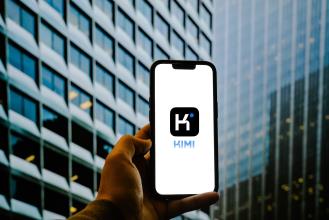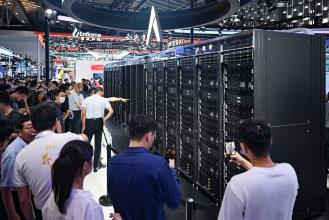Moonshot AI vs GPT-5 & Claude: China AI Breakthrough 2025
- 12 November, 2025 / by Fosbite
Overview: What Happened and Why It Matters
In recent weeks the AI press lit up after a series of reports describing a Chinese research advance and head-to-head talk about Moonshot AI’s rumored GPT-5‑class system versus Anthropic’s Claude. If you only skimmed headlines you probably came away with a few dramatic soundbites — but the real story is more like an iceberg: a visible win above water and a lot of engineering, policy, and signaling underneath.
Honestly, I’ve watched these cycles before. Teams announce benchmark wins, competitors answer, and the conversation quickly becomes a mix of genuine progress and positioning. For developers and product leaders the pragmatic takeaway is the same: look past the press release. Focus on how models behave on your tasks, how they integrate with your stack, and what the compliance implications are.
How to read the coverage: progress, hype, and national strategy
There are three overlapping things happening when you see headlines about a breakthrough:
- Research progress: New architectures, training tricks, or data curation that can genuinely improve reasoning, factuality, or compute efficiency. These matter — but rarely magically transform every use case overnight.
- Benchmark signaling: A team posts results on selected tasks. Useful as a data point, not a proof of world-class, real-world performance. Benchmarks show where models excel, not all they can do.
- Strategic messaging: Governments and firms use breakthroughs to recruit, secure capital, and gain geopolitical leverage. That’s part PR, part policy.
So when you read “Moonshot AI vs GPT‑5 comparison 2025” or “China AI breakthrough 2025 explained,” pause. The question for your org is practical: which model gives you reliable answers, reasonable latency, and cost predictability on your real datasets?
Moonshot AI vs GPT-5 vs Claude — what are the differences?
Public comparisons tend to focus on three axes. I’ll tell it like I see it — blunt but useful.
- Scale and architecture: GPT-style families (OpenAI) historically push massive transformer stacks with huge pretraining datasets and ecosystem tooling. Claude and Anthropic’s approach layers in instruction tuning and a constitutional methodology aimed at safer outputs. Chinese lab efforts — including those labeled Moonshot in press — often emphasize language-localization, tailored knowledge bases, and sometimes slightly different architectural tweaks to squeeze efficiency out of limited compute budgets.
- Reasoning and multi-step tasks: Techniques like chain-of-thought prompting, retrieval-augmented generation (RAG), and symbolic scaffolding change the game for multi-step reasoning. GPT-family models have been strong generalists; Claude trades a bit of raw risk-taking for steadier, less hallucination-prone answers. Recent Chinese research claims gains in symbolic/math reasoning — promising, but needs independent verification.
- Deployment and access: APIs, plugin ecosystems, moderation policies, and enterprise support shape who can actually use these models. Western providers usually offer broad third-party integration; many Chinese models focus tightly on domestic enterprise needs and local compliance (which is a huge advantage if you operate primarily in that market).
To be blunt: which is "better" depends on the job. For cross-border SaaS you care about ecosystem and compliance. For local-language, regulation-heavy products a regional model might beat GPT‑5 on practical metrics.
A short example: how these differences show up in practice
Picture an e-commerce support desk that must answer policy questions, escalate disputes, and draft follow-up emails. The differences are concrete — I’ve seen this exact decision play out twice this year.
- GPT‑style model: Great out-of-the-box email drafting, strong at general policy explanation and paraphrase. Tons of plugins and community tooling mean you can iterate faster.
- Claude-style model: Safer defaults and fewer hallucinations without aggressive prompt engineering — useful when conservative responses reduce legal risk or customer frustration.
- Localized Chinese models: Better at local language nuance, regional regulation, and integrations with domestic enterprise software stacks — often the sensible choice for China-focused operations.
In one client pilot a smaller, targeted model beaten a headline-grabbing larger model on business KPIs after targeted fine-tuning — lower hallucination rate, faster responses, and better customer satisfaction. The lesson: size is not destiny.
China’s reported breakthrough — what to believe
Reports are talking about improvements in training scale, curated datasets, and algorithmic tweaks that boost efficiency and certain task performance. Independent verification is limited — so be cautious. Still, there are clear long-term trends worth believing:
- Growing domestic AI talent and infrastructure in China — real and accelerating.
- Significant government and private investment pushing applied research and deployment.
- A pragmatic focus on localized capabilities: domain-specific fine-tuning, language nuance, and enterprise integration that matter for real products.
Want to triangulate the truth? Look for code releases, preprints on arXiv, and reliable write-ups from outlets that re-run benchmarks or audit model behavior. arXiv preprints, MIT Technology Review, and Nature-style papers are good places to dig deeper.
Practical advice for businesses and developers
If you’re choosing an LLM or watching the market, use a checklist — I wrote one that’s intentionally pragmatic:
- Test using your data: Run pilots with your prompts and measure hallucinations, latency, and cost. Don’t trust demos — replicate them on real inputs.
- Consider compliance: Local data laws, export controls, and regional regulations can restrict what you can deploy internationally. If you operate in China, a localized model can reduce compliance friction.
- Prioritize safety: For external-facing automation, safety guardrails and moderation policies often matter more than a small edge on benchmarks.
- Plan for integration: Ecosystem support — APIs, plugins, fine-tuning options — can save months of engineering effort and reduce hidden costs.
A short operational checklist I use with teams: pilot on a narrow slice of traffic, instrument escalation rate and customer satisfaction, run synthetic stress tests for edge cases, and compare cost per resolved ticket. If you do that, you’re doing hybrid evaluation — which beats relying on a single benchmark.
One original insight: hybrid evaluation beats single benchmarks
My experience: teams that combine human evaluations, synthetic stress tests, and long-run A/B experiments make much better procurement decisions. We once measured operational accuracy, escalation rate, and customer satisfaction — the winner wasn’t the largest model, but the one with domain-specific fine-tuning and better guardrails. Lesson: measure what matters to your product, not the leaderboard.
Further reading and sources
To dig in on LLM benchmarking, RAG, or model safety, check these sources and topics:
- Representative arXiv papers on LLM improvements (search chain-of-thought, RAG, and instruction tuning).
- OpenAI Research — papers and posts on the GPT family and evaluation methods.
- Anthropic Research — safety-oriented approaches like constitutional AI and instruction tuning.
- MIT Technology Review for accessible analysis of geopolitical AI moves and verification journalism.
Conclusion: momentum, not miracles
Stories about Moonshot AI, GPT‑5, and China’s breakthroughs reflect real momentum — but they’re also competition and PR. If you’re evaluating models in 2025, prioritize hybrid evaluation methods (human + synthetic + A/B), measure hallucinations, latency, and cost on your data, and consider localized compliance and deployment realities. Stay skeptical, run controlled pilots, and pick the solution that matches your business metrics — not the headline.
Note: This article synthesizes public reporting and research trends. For mission-critical decisions, run controlled pilots and consult technical experts.









